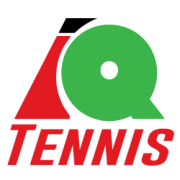Hand-eye coordination is a reflection of our reaction to avoid, or in tennis, strike an object. Exceptional hand-eye coordination is a skill that’s developed over time by athletes to hit a moving ball.
Developing hand-eye coordination is fun and it’s for everyone, and it can be as simple as tossing around a few tennis balls.
WHY IS HAND-EYE COORDINATION SO IMPORTANT?
Without hand-eye coordination, it’s very difficult to be successful in most sports. Athletes need to use visual information of the ball’s location and trajectory to move their hands and body to complete a task.
You might be thinking “sports like soccer don’t need to train hand-eye coordination because players only use their feet.” Well, that’s exactly the reason soccer players SHOULD do it: they don’t get to develop hand-eye coordination anywhere else. Hand-eye coordination is for general athleticism and is not sport-specific, and developing this skill comes with the bonuses of visual tracking and anticipation. So, athletes can develop hand-eye coordination using tennis ball drills then transfer it over to their sport during practice.
Additionally, there are many other skills that go into completing hand-eye coordination drills that can transfer to sport.
Coordination: using the entire body (arms and legs) to complete a task; for example, sprinting, wrestling, or throwing a ball. Although hand-eye coordination by definition is using visual information and the hands to complete a task, sports require the use of an athlete’s entire body, as almost nothing is performed just standing still. Tennis ball drills are valuable because the locomotion uses the entire body plus the visual information to complete the task.
Motor control: performing movements in the right directions and intensities to accomplish a task. This is developed by putting the correct amount of effort into the throw/toss with the right direction to give the best chance of catching the ball, especially if bouncing off a wall.
Visual tracking and anticipation: using visual information from objects to predict the rest of its path, and consequently acting on it. This is developed by judging the trajectory of the tennis ball and deciding how far and fast to move to intercept the ball.
HOW TO IMPROVE HAND-EYE COORDINATION
How to start implementing tennis balls for hand-eye coordination into your training? First, you have to understand the different variables that go into a drill. Then, manipulate each variable when implementing these drills to affect the difficulty:
- Number of tennis balls (1 or 2)
- Number of hands (two hands allowed on the catch vs. one hand behind the back)
- Tennis ball movement (non-throwing, such as figure 8’s around legs/torso/head vs. throw and catch)
- Type of throw and catch (small or big throw; above a theoretical target; same-hand throw and catch vs. opposite hand catch; underhand or overhand; inside or outside the body frame etc)
- Athlete movement (in place, in place rotating, in place on one leg)
- Locomotion (walking forwards/backwards; jogging/backpedaling; skipping forwards/backwards vs. shuffling, carioca-ing, hopping, running and stopping on a line)
- Bounce/ricochet (off the ground or off a wall)
- Including a partner (a partner tosses back and forth with 1 or 2 balls, in place or moving, off the ground or ball or in the air, same or opposite hands)
Like anything else in training for sports, start slow then progress from there. The last thing you want is to start with a drill that is too challenging, then the athlete may get frustrated and never want to do tennis ball drills again. Start simple and if the athlete is extremely successful in the first four or five tries, then immediately progress the drill.
Remember, if a drill is a little bit too difficult, don’t hesitate to regress it.


Add Comment